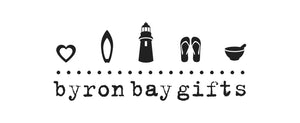Plastic has certainly had its place in history and was originally derived from cellulose, a substance found in plants and trees. In the 1800’s early plastics were being tested as a replacement for products like ivory and tortoise shell and is now a product that is widely used and easily discarded.
With Plastic Free July coming up, it’s the perfect time to take a look at the plastics in your life and see which ones can be substituted for a safer alternative. We’re going to take a look at single-use plastic products that are used daily and can be substituted for durable options, meaning less rubbish discarded on our beautiful planet.
PLASTIC BOTTLES
A lot of people think that it’s ok to buy plastic bottles because you can simply recycle them but we all need to think about the bigger picture. What goes into making, filling and recycling a plastic bottle of water?
It can take up to seven litres of water and one litre of oil to produce one litre of bottled water.
Well, first let’s start with getting the water out of the ground. The energy used for this creates over 60,000 tons of greenhouse gases to supply just Australian consumers. To manufacture and transport the plastic bottles requires over 460,000 barrels of oil and only about 40% of these bottles are recycled. Water bottles are often chilled and refrigeration uses more energy.
What can I do? At home, drink tap water from a glass. When you’re going out take a reusable bottle with you filled with tap water from home - try a glass water bottle as a long-term replacement for plastic.
COFFEE CUPS
Coffee cups are estimated to be next in line after water bottles, when it comes to contributing to litter waste. Many coffee cups are touted as being compostable, recyclable or biodegradable – but are they really? Well, if your local council accepts coffee cups as part of their recycling program then that’s good but not all areas do, meaning your coffee cup may end up in landfill.
It is estimated Australians use 1 billion disposable coffee cups each year.
Many disposable cups have a plastic lining that will not break down for many years or they have an additive added to the oil-based plastic lining to break the product down in an oxygen-free environment, but there is no current evidence that this actually works in a landfill setting.
What can I do? The best option here is to invest in a re-useable coffee cup. Remember, wether or not your disposable cup is any of the latter environmental options, the energy that goes into making and recycling them is still markedly more than if you just take your own coffee cup to your local café. Why not design your own keep cup?
PLASTIC BAGS
The most common thing you’ll hear about plastic bags is what cheap rubbish bags they make. But consider this, the items you put inside these bags are going to break down much slower because the plastic bag ‘protects’ them.
First, let’s start sorting our rubbish. Have one or two bins for just paper and recyclable items and a smaller bin for food scraps. You don’t need plastic bags at all but if you’re worried about the smelly food scraps contaminating your rubbish bin, there are bio-degradable options available that can be added to the compost.
By 2050 it’s estimated that there will be more plastic than fish in the world’s oceans.
Secondly, start taking cotton or jute bags to the supermarket to do your shopping. Now, cotton bags would need to be used 170 times to offset one typical plastic bag but if you average say ten plastic bags per grocery shop times five cotton bags (let’s face it, they do hold more without breaking), that’s 85 trips to the supermarket. It will take you about a year and a half to work off your cotton bags – after that you’re moving into green territory. Let’s not forget that your ten plastic bags will take far longer to break down than jute or cotton if either ends up in the landfill.
What can I do? Take cotton or jute bags to the supermarket or any shopping (including clothes shopping). Hold on to your bags and keep re-using them rather than purchasing new ones.
PLASTIC STRAWS
They’re so little – surely they can’t have that much of an environmental impact? Unfortunately, it’s the sheer disposable nature of straws that makes them so hazardous – they’re one of the top 10 items found during beach clean-ups.
Plastic straws were first used in the 1960’s as a trendy alternative to paper.
Also, they contain nasty chemicals like BPA, a chemical that is proven to be toxic. They don’t degrade, often can’t be recycled and are made from fossil fuels – all the things that are bad for our environment.
What can I do? Say, no to straws altogether. If you’re at a café and getting a takeaway milkshake, refuse the lid and the straw. Why not suggest to the café owner that they switch to a compostable option?
Register your involvement at the Plastic Free July website and see if you can change the above into new habits. The planet will thank you for it!
Plastic Free July

